Leopard Geckos, known for their sweet faces and gentle temperaments, have become a popular pet among those who cannot have or do not want traditional furred companions. They are great pets for people interested in companionship but desiring animals with relatively simple care needs. This makes them a good choice for those unacquainted with reptile care, offering a fulfilling pet experience with a manageable learning curve.
When it comes to breeding, many owners find themselves intrigued and often wonder about the reproductive aspects of these charming reptiles. A common question is How Many Eggs Do Leopard Geckos Lay?
Typically, Leopard Geckos lay around 8 to 10 eggs during each breeding season. This occurs once they reach maturity, presenting a fascinating aspect of their lifecycle for both novice and experienced reptile enthusiasts.
This characteristic not only underscores their ease as a pet but also offers a unique scoop into the world of reptilian breeding, enhancing the owner’s understanding and appreciation of these wonderful creatures.
Table of Contents
When Is the Leopard Gecko Breeding Season?
In the wild, the breeding season for Leopard Geckos typically spans from January to September. This period is crucial as it’s the natural time when these reptiles are most inclined to breed.
However, in captivity, the scenario shifts remarkably. Many breeders have observed that Leopard Geckos can be encouraged to breed virtually any time of the year round. This flexibility in breeding schedules is often claimed to improve the overall health and fertility of the geckos.
During my years of experience with these fascinating creatures, I’ve noticed a pattern in the way eggs are laid. Typically, females lay a small clutch of eggs, but this can vary. The controlled environment in captivity allows for more consistent breeding and egg-laying, which is a stark contrast to the unpredictable nature of their wild counterparts. It’s fascinating to see how adaptable these creatures are, thriving under varied conditions and still managing to maintain their breeding cycles.
How Do I Encourage My Leopard Geckos to Breed?
When breeding Leopard Geckos, a key strategy involves forming a colony with one male and at least two females. This setup is encouraged as it closely mimics their natural social structure.
Understanding the time of oviposition, or egg-laying, is crucial. To align their breeding cycle with this period, you can shorten the day cycle in the enclosure by shielding it from bright light for more hours. This adjustment simulates the natural decrease in daylight, signalling to the geckos that it’s time to breed.
Furthermore, maintaining an optimal temperature in the tank, around 70–75 degrees Fahrenheit, is essential for breeding success. Additionally, designating an area for ovipositioning is vital.
Tip: A soft, moist substrate allows the females to comfortably bury their eggs. This mimics their natural environment, encouraging them to lay eggs. Through my experience, these methods have proven effective in creating a conducive breeding environment for Leopard Geckos.
Leopard Gecko Gestation Cycle
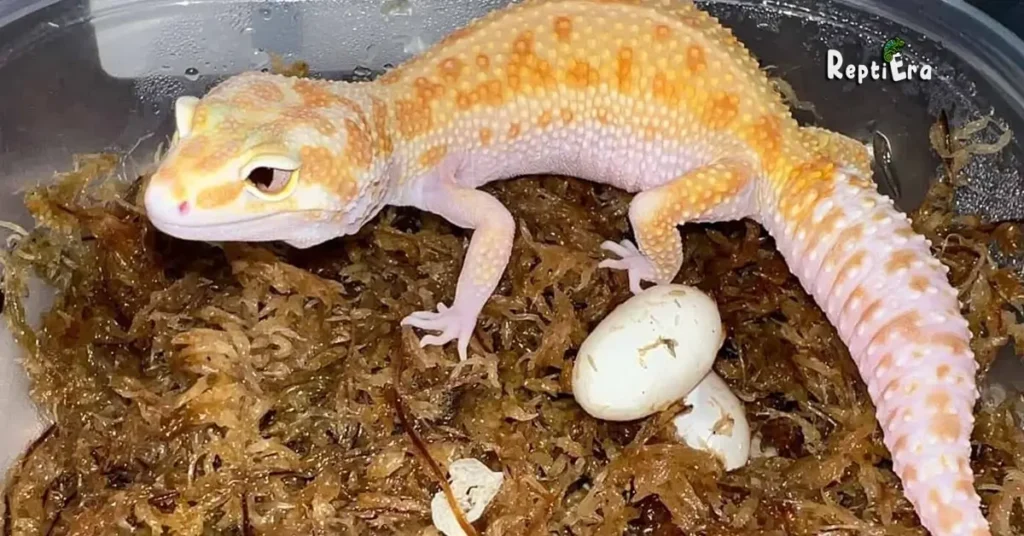
The gestation cycle of a Leopard Gecko typically spans 18–22 days, during which the eggs are gestated inside the females. After this period, a female Leopard Gecko will lay a clutch consisting of one to two eggs.
Remarkably, a single female can produce up to five clutches during a regular breeding season. Over their lifetime, if bred under natural conditions, these geckos can produce between 80–100 eggs. It’s normal and not a cause for worry to see eggs visible beneath the skin of a gravid (carrying eggs) gecko. Providing a high-calcium diet helps these females replace the excess calcium lost in the creation of eggs.
When first laid, the eggs are soft and sticky to the touch. Over the next few days, they harden and develop a leathery, chalk-white membrane. This change indicates healthy egg development. However, it’s important to note that sometimes infertile eggs may be laid. These infertile eggs differ in appearance and, unlike their fertile counterparts, do not progress through the usual developmental stages.
Where Do Leopard Geckos Lay Their Eggs
Leopard geckos have interesting egg-laying behaviours, which vary slightly between the wild and captivity. In the wild, a female leopard gecko will typically seek out suitable burrows or hides for the purpose of laying her eggs. These sites are often picked for their safety and temperature stability. Interestingly, these geckos may use burrows made by other animals, a strategy to minimize energy expenditure.
Once a suitable site is found, the female will lay her eggs inside the burrow and then leave them to incubate without any further care from her.
In captivity, the behaviour is somewhat replicated. Female leopard geckos still display the instinct to find secluded, secure places for egg-laying. Providing them with an appropriate laying site, such as a secluded hide with a moist substrate, is essential for successful egg incubation. This not only mimics their natural environment but also ensures the eggs are kept in optimal conditions for development.
Also Read: HOW FAST IS A LEOPARD GECKO
Why Are My Gecko’s Eggs Infertile?
Discovering infertile eggs in your Gecko’s enclosure can be disheartening, often pointing to underlying issues such as diet inadequacies or sterility. Whether in males or females, infertility can significantly impact egg production. A common reason for this condition is an inadequate diet. A well-balanced nutritional plan is crucial for reproductive health in geckos. Ensuring that your gecko receives all the necessary nutrients, especially those vital for reproduction, can often rectify this issue and lead to successful egg-laying in the future.
Egg Incubation
When it comes to Leopard Gecko eggs, incubation is a critical process that must be done separately from the parents, as they tend to eat their own young. A common practice is to use plastic deli cups or shoeboxes filled with vermiculite or perlite—these are the most common incubation containers. The mixing of the medium should be done carefully, adhering to the ratio of one part of water by weight, not volume, to maintain the correct humidity.
The eggs are then slightly buried, about one-half-inch apart, and the container is covered with a tight lid. To ensure the baby geckos can breathe, pushpin holes are made on the top. If dents start occurring on the eggs, indicating they’re too dry, a light spray on the inner sides of the container, but not directly on the eggs, is advised four or five times during the incubation period.
The temperature at which the eggs are incubated plays a crucial role in determining the sex of the babies. If the eggs are incubated at temperatures set between 85 and 87 degrees Fahrenheit, the ratio of males to females will be roughly equal. However, at temperatures primarily around 88–90 degrees, there’s a higher likelihood of males, whereas 80–84 degrees favors females.
Note: Temperatures below 74 degrees Fahrenheit can be lethal, resulting in unhatched eggs. Many breeders use incubators with precise temperature control to create an optimal environment. Without proper temperature and substrate management, the eggs may shrivel up and die. The incubation period ranges from 35–89 days, depending on these conditions.
Hatchling Care
Hatchling care for Leopard Geckos is a delicate process, and they are often raised individually to ensure adequate space and safety. When raised together, there’s a concern that smaller geckos may be bullied or have less access to food. At the beginning of their lives, these hatchlings feed on the yolk of the egg and are not immediately fed other foods. They typically shed for the first time within several days after hatching.
A hatchling will reach a length of about 7 inches when grown. For their housing, a shoebox-sized setup, measuring approximately 12 inches long, 6 inches wide, and 4 inches tall, creates an ideal cage. This setup should include a hide box and maintain a continuous temperature near 90 degrees at the warm end, with a cool end at the same temperature as an adult’s requirement, around 73 degrees.
The floor covering of their enclosure can be paper towels, which are ideal for young geckos. Juveniles typically begin eating within the first three days after their first shed. Feeding them 1-inch-long mealworms is recommended, offering the baby gecko about five to 10 worms in a jar lid every other day. This setup provides the optimum environment for the young geckos, ensuring they grow in a safe and controlled space.
How to Breed Leopard Geckos? Our Introduction to Leopard Gecko Breeding
Though breeding leopard geckos is often viewed as a straightforward task, it can be complex and sometimes even dangerous. Discover more in our guide to leopard gecko breeding.
Leopard geckos are often regarded as the simplest reptiles to breed due to:
- Their breeding season extends for a considerable duration.
- Initiating breeding doesn’t demand any specific conditions.
- The care for hatchlings is straightforward, with no need for specialized food types.
Nonetheless, breeding can become complex and potentially perilous if:
- The female leopard gecko is not properly nourished and in prime condition.
- Optimal environments for egg incubation are not maintained by the breeder.
- Adequate food supply for both the breeding pair and the hatchlings is lacking, leading to impaired growth and health issues.
Discover how to bypass typical errors and challenges in leopard gecko breeding. What are the best practices? Uncover the secrets in our beginner’s guide to breeding leopard geckos.
Leopard Habitat
Leopard geckos, fascinating creatures known for their distinctive morphs like the Diablo Blanco, thrive in carefully curated environments. From hatchling to adult, these geckos require specific caging conditions to live their entire lives in health and comfort.
A 10-gallon or 20-gallon aquarium works well for housing two leopard geckos. It’s crucial to have a cage at least 1 foot in height, ensuring a secure screen top to prevent escapes and protect against bothersome pets like cats. This setup becomes their dining and living area, a personal space they can call home.
In my experience, the choice of substrate is vital. Avoid fine-particle products like sand that pose a risk of intestinal impaction if consumed by young or debilitated geckos. Instead, opt for newspaper, pea gravel, artificial turf, or flat stones. In some cases, no floor covering is the safest choice.
Decoration plays a role too; artificial plants add a touch of nature and beauty. When it comes to lighting, UVB is essential, but heat rocks should be avoided as they might become too hot and burn the gecko. A simple 25-watt light placed over the screen top can provide daylight for about 12 hours a day, allowing them to bask and maintain a healthy circadian rhythm.
A hide box, around 6 to 7 inches in diameter, filled with moist peat moss or vermiculite, is required for them to shed their skin and lay eggs. The ideal temperature for egg-laying is between 86 and 90 degrees Fahrenheit, with an ambient air temperature around 73 degrees. For heating, I recommend an under-tank heating pad or heat tape for proper temperature control, avoiding the use of heat rocks. With these conditions met, your geckos will thrive in their leopard habitat, a testament to the care and love you provide as a pet owner.
Also Read: DO LEOPARD GECKOS NEED BATHS
Feed to Breed
Feeding is a critical aspect of successful breeding in leopard geckos. Their diet primarily consists of insects like crickets and mealworms (specifically Tenebrio molitor), which should be offered every other day. A vital rule to follow is ensuring the size of the insects is appropriate: no longer than the head and no thicker than half the width of the gecko’s head. This prevents the risk of choking or digestive issues.
Using a shallow dish for mealworms helps maintain cleanliness in the enclosure. It’s essential to provide a balanced diet for your geckos. Gut-loading the feeder insects with nutritious foods like chick or hog mash for 24 to 48 hours before feeding them to the geckos is important. This process enriches the prey with additional nutrients, benefiting the overall health of your leopard geckos.
In addition to their regular diet, it’s crucial to offer extra calcium and vitamin D3. This can be done by dusting the insects with a supplement, which can be placed in a jar lid in the corner of the cage. The geckos can then decide to consume it as needed.
Another key aspect of care is providing a sturdy water dish, ideally 3 to 6 inches in diameter, ensuring fresh water is always available in the enclosure. This simple yet effective approach to feeding not only supports the health and vitality of leopard geckos but also enhances their ability to reproduce and lay eggs effectively.
Related Post: HOW MUCH TO FEED LEOPARD GECKO
Breeding Basics
In the world of leopard gecko breeding, understanding their lifecycle is key. Typically, females become sexually mature at around 9 to 10 months of age, weighing at least 45 grams. The breeding season for these fascinating reptiles, especially those living North of the equator, spans from January to September.
Individuals that are hatched late in the year usually start laying eggs in April of the following season. The cool-down period is critical for their first-year growing cycle. It involves stopping feeding for about 10 days and maintaining a temperature between 74 and 78 degrees Fahrenheit, with water available 24/7. After this phase, which lasts six to eight weeks, the geckos are ready for breeding. This preparation is especially important for unique morphs like the raptor.
The mating ritual of leopard geckos is quite distinctive. When introducing a female to a male, watch for a tail-vibration routine. The male’s fast rattle indicates he’s receptive. If the female is receptive, she stands still, allowing the male to grasp her neck skin with his mouth – a form of restraining that is normal during copulation.
This successful mating process usually takes two to three minutes from start to finish. After mating, it’s often wise to Remove the female from the male’s enclosure to prevent any undue stress. This methodical approach ensures a healthy breeding cycle, leading to the successful laying of eggs.
Also Read: WHY IS MY LEOPARD GECKO LICKING HIS BUM
Egg Laying
In the intricate world of leopard gecko breeding, understanding egg-laying is crucial. Females typically lay eggs about 16 to 22 days after copulation. During the breeding season, one can expect a clutch every 15 to 22 days over a span of four- to five months. Each clutch generally consists of one or two eggs, but across a female’s lifetime, the total can add up significantly.
A healthy female, especially in her first breeding year, might lay around eight to 10 eggs. Over her lifetime, she may produce between 80 to 100 eggs, with larger morphs like super giants or albinos, weighing over 150 grams, potentially laying even more.
Tip: For successful egg-laying, providing an egg-laying box in the cage is essential. This box should be around 6 to 7 inches in diameter and 4 inches tall. In cages housing three to five females, a plastic shoebox can be ideal. Ensure it has a 2-inch-diameter hole in the box lid to allow geckos easy access in and out.
Fill the box with peat moss, vermiculite, or Bed-A-Beast litter to mimic moist fresh earth. However, avoid making it too wet, as this can lead to infertile eggs – a problem often stemming from poor nutrition or male sterility. Infertility issues can also arise if a virgin female is introduced to a male weighing between 45 to 55 grams who has not bred once a month. These nuances in breeding and egg-laying strategies contribute significantly to the reproductive success of leopard geckos.
Are You Sure You Want to Breed Your Geckos?

At first sight, the idea of breeding Leopard Geckos may seem irrelevant to the question you have already set in your mind. However, I suggest taking some additional time to think it through. While they are considered one of the easiest reptiles to breed, being a responsible owner means you shouldn’t take leopard gecko breeding lightly. Consider all aspects before deciding; it should not be a default decision made without thorough understanding and preparation for the commitment it entails.
Multiple valid reasons exist for refraining from breeding your pet leopard geckos:
- Female leopard geckos experience considerable exhaustion from egg-carrying and laying. They require optimal health to remain healthy; otherwise, they risk becoming emaciated and could succumb to complications like egg binding.
- The lifespan of breeding female leopard geckos is generally shorter compared to their non-breeding counterparts and males.
- Finding adoptive homes for baby leopard geckos can be challenging. In some regions, it might be difficult to locate enough responsible new owners. Additionally, transporting the juveniles to distant locations is not straightforward.
- Breeding results in numerous additional mouths to feed, demanding more resources and time.
- Breeding geckos as a quick means to generate income is not advisable. Turning leopard gecko breeding into a profitable venture requires extensive learning, investment, and commitment. For the average leopard gecko enthusiast, small-scale breeding is a more viable option.
Note: Failing to manage the challenges of breeding correctly can result in both human and reptile discomfort, and in extreme cases, loss of leopard gecko lives. On the bright side, breeding is not all trouble; studying their biology and reproduction first-hand is an up close, exhilarating experience. However, be aware that it requires a substantial amount of time, space, and resources. This venture is more than just a hobby; it demands serious dedication
Leopard Gecko Reproduction
In the world of many reptiles, Leopard Geckos stand out with their unique reproductive process. Understanding this process is crucial for anyone interested in breeding or caring for these animals. When a gravid female is ready to lay eggs, her physical changes are noticeable. This species exhibits sexual dimorphism, where males and females have distinct physical characteristics.
The size of their bodies and the presence of hemipenal bulges in males make it easy to tell them apart. The mating process involves distinct courtship rituals, with the male approaching, nudging, and occasionally biting at the female’s neck or base of the tail. While this might seem aggressive, it’s a part of their natural behaviours.
Once mated, a female Leopard Gecko can retain sperm for several months, which allows her to lay multiple clutches of eggs throughout the year without mating again. This fascinating aspect of their reproduction is often a surprise to those starting to learn about these creatures. So, when you start talking about Leopard Gecko breeding, it’s not just about the egg-laying but also about understanding the intricate behaviours and physiological adaptations that make these reptiles unique in their reproductive strategies.
FAQs
Can leopard geckos lay more than two eggs at once?
Leopard geckos typically lay clutches of two eggs, but occasionally, they might lay one or, in rare cases, three. In their first breeding year, owners can expect around 8 to 10 eggs, with an ultimately larger count of single clutches summing up to 80 to 100 eggs over their lifetime.
How do you take care of leopard gecko eggs?
When a Leopard gecko lays eggs, they must be incubated separately; create an incubator using a shoe box with perlite or vermiculite as a substrate, mixed with water in a 50:50 ratio. Slightly bury the eggs, keeping them about ½ inch apart, cover the box with a lid, and make holes on the top to let in air for proper incubation.
How Many Eggs Do Leopard Geckos Lay Per Season?
In the wild, it’s typical for Leopard Geckos to lay one clutch every 15 – 30 days during the breeding season, which in the northern hemisphere spans from early spring to late summer. The number of clutches a female can produce in a single season varies, ranging from 2 to up to 10, with outlier numbers being uncommon. In a calendar year, Mature adult females may lay anywhere from 10 to 16 eggs per season.
Do Leopard Geckos Lay Unfertilized Eggs?
Even when not breeding, pet Leopard Geckos, like other animals such as chickens or ball pythons, can lay unfertilized eggs. It’s known that in captivity, it’s uncommon but not unheard of for captive females to never lay eggs; unlike some lizards that may resorb or retain calcium to produce the eggshell, it’s standard to expect some unfertilized egg-laying in captivity.
How Many Babies Are In A Leopard Gecko Egg?
Eggs of the Leopard Gecko are engineered to foster the life of a single individual reptile, containing yolk sacs and embryos surrounded by albumin to support the baby during development. While in some reptile cases, like snakes, two reptiles can be born from one egg, this is an unusual and bizarre phenomenon and not typical for leopard geckos.
Do Leopard Geckos Incubate Their Eggs?
Unlike most reptiles, Leopard Geckos do not incubate their eggs or offer parental care; instead, the eggs are incubated by the warmth and darkness of the burrows they are laid in. The Female does not sit on or protect the eggs after they have been laid, which is a common trait among many reptile species.
Conclusion
Leopard geckos have a fascinating reproductive pattern when it comes to how many eggs they lay. Under the right conditions, especially with older and healthier females that are genetically disposed, it’s possible to see up to 10 clutches in one season. Each clutch typically comprises two eggs, summing up to a potential total of 20 eggs per year. However, realistically, most leopard geckos usually lay between 6 to 8 clutches a year, resulting in about 10 to 16 eggs. This number can vary greatly from individual to individual, particularly in captive environments where conditions can be more controlled.
It’s important to note that these eggs can be either fertilized or unfertilized, depending on the nesting conditions and whether the female has been with a male. Sometimes, leopard geckos may lay eggs unexpectedly; if you find yourself in this situation, don’t worry—it’s completely natural. The key to maximizing egg production lies in maintaining optimal health and environmental conditions for the breeding geckos.


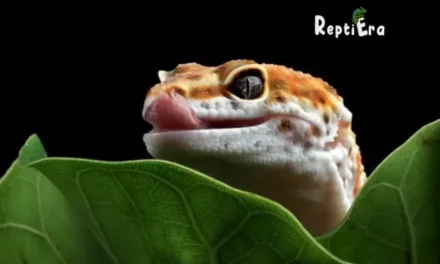
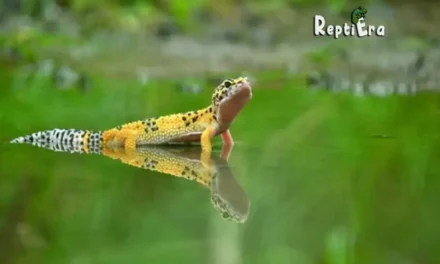
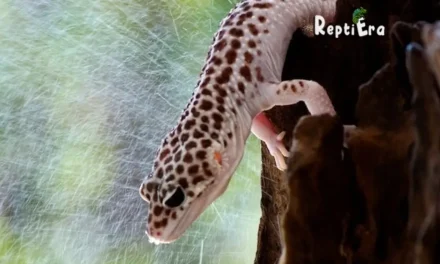
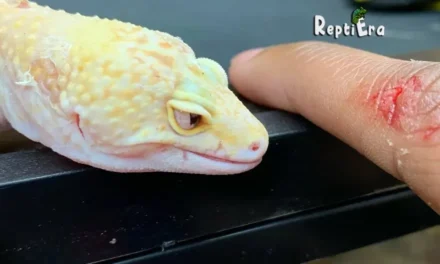
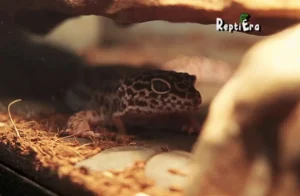
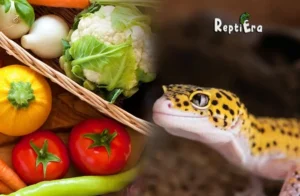
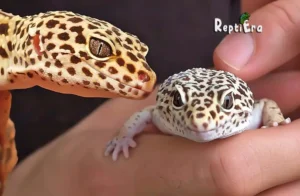
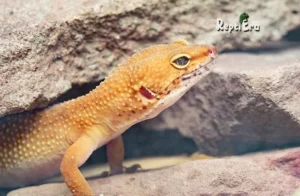
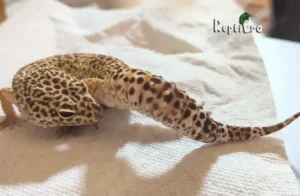
Your article helped me a lot, is there any more related content? Thanks!